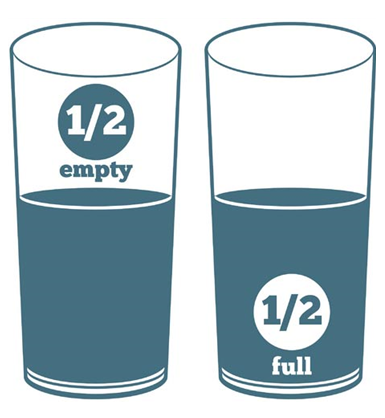News & Events
Leadership Likes: Mr King

I have been considering optimism a great deal this week. Sparked by a webinar from the Positive Group, I’ve learned that there are different kinds of optimism. The sliding scale from Absurdly (over the top) Optimistic down to Worryingly (doomsday) Pessimistic is now thought to be two separate scales. It is argued by some clinicians that within one person the levels of optimism and pessimism can vary over time and interact in different ways.
The topic raised itself again while I was attempting to place myself as a Year 11 pupil in the year 2020. It would be easy to imagine that optimism is a little harder to come by than previous years. Our Year 11 are talented, diligent and resilient. They are supportive of one another, and they have ambition. Even so, seeing the treatment of their peers in Public Exams this summer, and an increasing frequency of headlines casting doubt over the validity or even existence of the exams they are working so hard towards, is draining.
So, where is the place for optimism then? Well, it depends which type you mean….
Healthy Optimism requires a concerted effort to imagine good outcomes. Like all neural pathways, it is strengthened the more it is used. So asking ourselves questions about what an event, a conversation, a meal, a homework, will look or feel like if it goes well, quickens the brain’s ability to release “feel good” hormones. “I know I can do this one task well, provided I concentrate. I just need to remove distractions and concentrate! Certainly, the habit of thinking this way prevents rumination on negative outcomes which is itself a positive thing!
Healthy Pessimism, whilst is sounds oxymoronic, actually serves us well because it provides thinking time on the plausible negative outcomes of events, but stops short of extrapolating those thoughts to a catastrophic conclusion. This pessimism would be of the “If I forget to eat breakfast, I know I’ll be STARVING by lesson 3, and I know we are on second lunch. That would be annoying.” So, we eat breakfast. Healthy pessimism gives us the motivation to act either more positively, or in such a way that we avoid negativity.
It stands to reason that there must also be Unhealthy Optimism, and Unhealthy Pessimism and indeed so. If one is so optimistic, to a point of stubbornness, not only can you be in danger of expending endless time and effort towards an unachievable goal, but there is the danger that close friendships/relationships are alienated.

Seeing the glass not just half full, but full to the brim the whole time means we might fail to recognise and empathise when those dear to us are struggling with something. Unhealthy pessimism is much more straight forward. Asking “what if?” ad infinitum means we can quickly move from “What if I don’t get full marks on a test?” to “then I’ll never be happy in life” through a series of unfounded worries, even when we have been counselled of an antidote to each step along the way.
So, year 11, and Upper Sixth, and all pupils in fact, what is there to be optimistic about and how can we know it is the right kind of optimism?
Well, we can count ourselves fortunate that we have had uninterrupted schooling since March. It hasn’t been easy in places and we haven’t all had the same experience, but we have had enough of a shared experience to be able to connect and empathise with one another. We are fortunate to meet people day to day, it keeps us mentally healthy, and we are going outside in the process. Let us not underestimate this.
We come to school in an environment which looks forward as a default, but which first values the here and now for what it can teach us. It is for this reason that our cohorts last year fared so well – we knew them and could evidence their worth. And, for this year’s exam classes the same is true. Whatever is decided nationally, teachers have designed teaching and learning this year to deliver evidence of your worth in the event that you are prevented from doing so yourselves.
More globally, we read positive news about vaccines, which while they will most likely not arrive at Croydon High School as a first port of call, mean that society at large will be placing a lower risk on the more vulnerable. It will also ease some of the constraints within school too, we hope.
But, Mr King, what does that mean for me? For pupils, even ignoring the paragraphs above, it means you are in charge of your own positivity. It can take 12 weeks of practice to form a habit changing behaviour. That can be a long time. But the good news is that each day counts. So, when faced with a possibility or a thought about the future, try choosing the Healthy Optimistic option or the Healthy Pessimistic option if you need some motivation, and make today one day of those 12 weeks.

David King
Deputy Head (Pastoral)
More news
Awards and Celebration
GDST Creative Writing Year 12 & 13 – highly commended
Co-curricular



